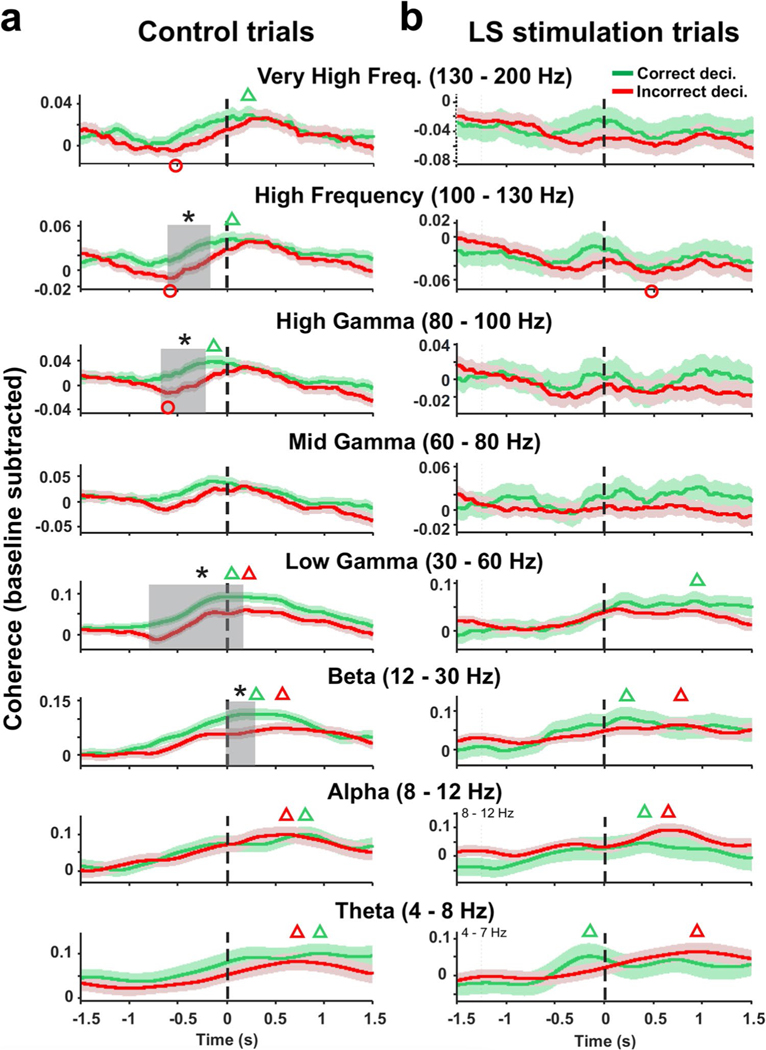Fig. 5.
Optical stimulation of LS Purkinje cells disrupts decision-related mPFC-dCA coherence modulation. a Time-resolved peri-decision coherence averages for correct (green traces) and incorrect (red traces) decisions for control trials. Peri-decision coherence was analyzed for eight separate frequency bands between 4 and 200 Hz with time 0 making the completion of the decision process defined by the mouse entering the next maze arm with all four paws. Baseline coherence values for each mouse were subtracted from peri-decision coherence functions before averaging. Green and red triangles mark coherence peaks for correct and incorrect decisions, respectively, that exceed baseline coherence (Wilcoxon signed-rank test p < 0.05). Red circles mark coherence minima falling below baseline coherence values for incorrect decisions (Wilcoxon signed-rank test; p < 0.05). No significant coherence minima were found for correct decisions. Decision outcome was reflected in differences in time course of coherence functions. Peri-decision times where coherence functions for correct and incorrect decisions differed are marked by gray-shaded rectangles (two-sample t test, *p < 0.05). b As in (a) but for LS stimulation trials. LS stimulation eliminated all differences between peri-decision coherence functions for correct and incorrect decisions

